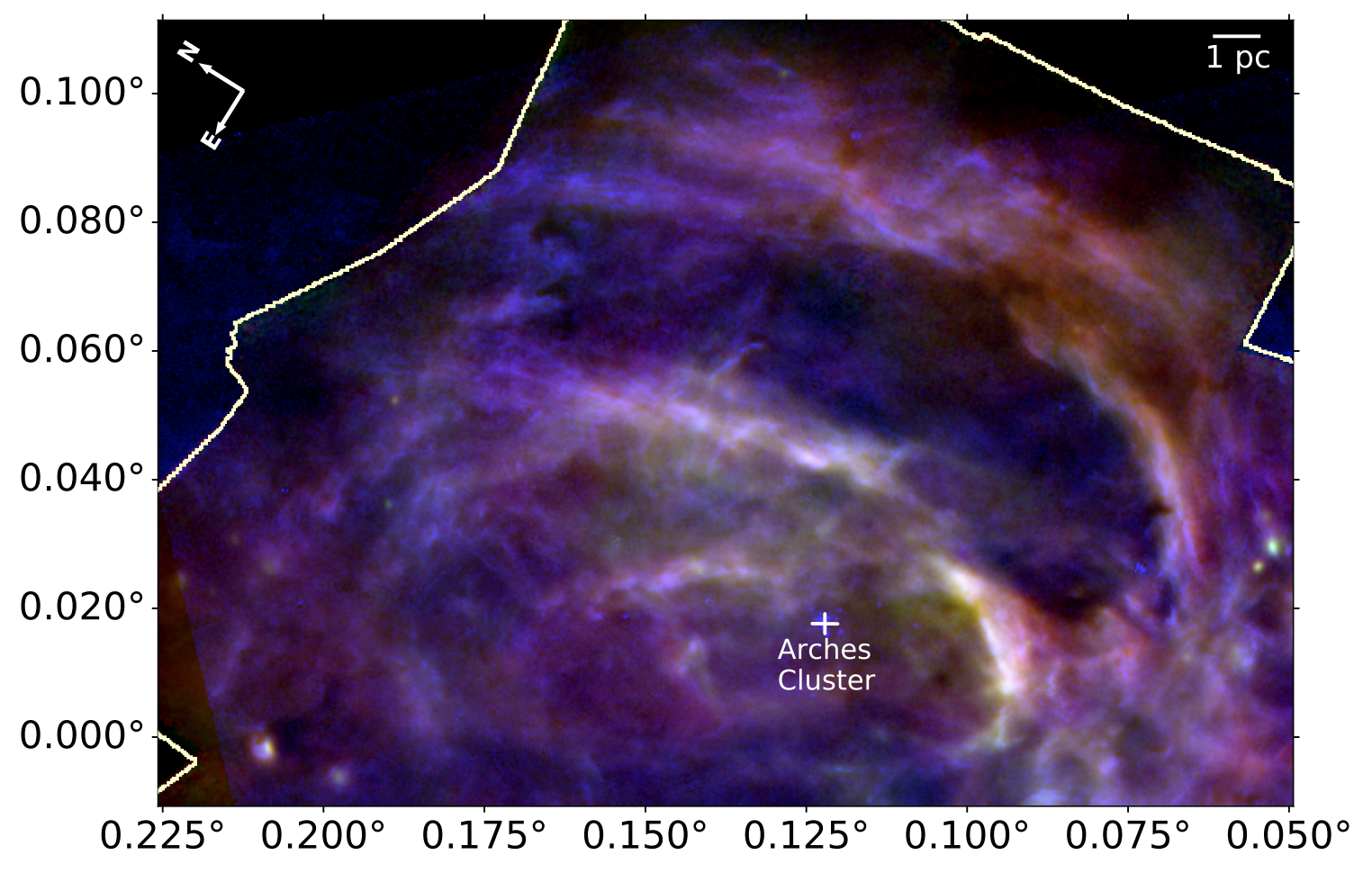The Arches Cluster, the densest star cluster in our galaxy, is located within the Galactic Center’s Central Molecular Zone (CMZ), just about 25 pc from Sagittarius A*. Named after the arch-shaped radio-bright structures in its line of sight, it is believed to be an important ionization source, powering the major star formation area in the CMZ (the Galactic Center bubble). The physical and dynamical characterization of the cluster’s environment is key to evaluating the stellar feedback from its hot young stars, and can in large part be derived from the analysis of publicly available archival SOFIA maps.
The GREAT map of the fine structure [C II] line at 158 µm offers the high spectral resolution necessary to identify distinct gas components along the line of sight, and to map out the region’s kinematics (project 05_0076, strip map 5A). Wide FIFI-LS maps of that same [C II] line as well as the [N III] line at 57 µm trace the distribution of dense gas on a larger spatial scale, and can be used to derive the temperature field (project 04_0032). Finally, thermal dust emission and compact IR-bright sources, including candidate young stellar objects, can be located from the 25 µm and 37 µm FORCAST maps, part of the Galactic Center Legacy program (project 07_0189). All these datasets are publicly available from the IRSA archive .

A false-color map of the Arched Filaments created with the HST Paschen-α emission (blue), SOFIA/FORCAST 25 µm (green), and 37 µm (red) data. The approximate locations of the Arches Cluster is marked with a white crosshair. An outline of the FORCAST survey footprint is also overlaid as a solid white outline in the plot. Previous FORCAST observations of this region have been featured in earlier works (Lau et al. 2016; Hankins et al. 2016, 2017) which provide more detailed analysis.